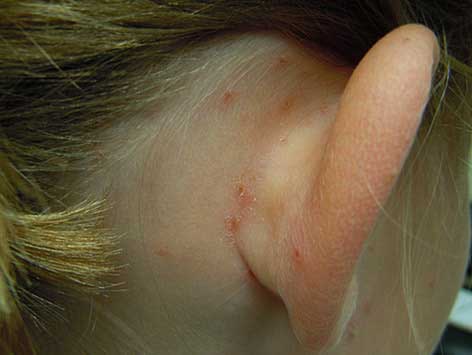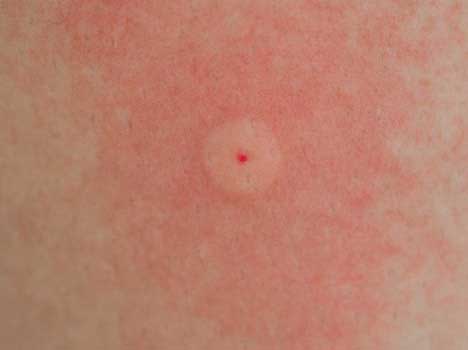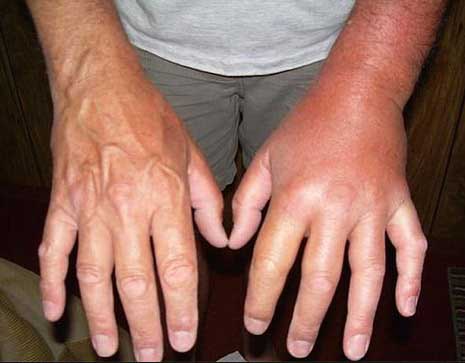Bug bites are a common nuisance, and recognizing them can be crucial, especially for those with allergies. Here’s a rundown of the ten most common bug bites and how to identify them.
- Mosquito Bites – Often small and itchy, mosquito bites can form either a circular shape or an elongated bump, depending on how long the mosquito was feeding. Scratching only aggravates the itch.

- Flea Bites – These are tiny, red, and usually grouped together, as fleas tend to bite in clusters. Flea bites can cause extreme itching and are often found on legs or ankles.

- Lice Bites – Similar in appearance to flea bites, lice bites usually concentrate on the scalp, behind the ears, or at the back of the neck. These bites are also itchy and often come with the discomfort of feeling crawling sensations.

- Bedbug Bites – Bedbug bites are redder and itchier than mosquito bites, often appearing in a zigzag pattern. If you notice such bites, it’s important to contact an exterminator immediately to avoid infestation.

- Tick Bites – Ticks leave a red ring around a darker center, a clear sign of their bite. Ticks can carry Lyme disease, so it’s critical to remove them properly using Vaseline or rubbing alcohol before pulling them out with tweezers. If unsure, have the tick tested for diseases.

- Wasp Stings – Wasps leave a painful mark that looks similar to a mosquito bite but with a central puncture mark. The sting site may become swollen and red, with a combination of itchiness and pain.

- Hornet Stings – A hornet sting is very similar to a wasp sting but can be more painful due to the larger size of the insect. The area often becomes red and swollen, with the pain lasting longer.

- Bee Stings – Bee stings are recognizable because the bee leaves its stinger behind. After removing the stinger with tweezers, it’s essential to disinfect the area. Bee stings are typically more painful but less aggressive than wasp or hornet stings.

- Red Ant Bites – These bites can look like flea bites, but they are more painful right from the start. Red ants (especially fire ants) can cause multiple painful, itchy bumps that may swell and blister.

- Spider Bites – Depending on the type of spider, bites can vary from mild to severe. Common signs include redness, swelling, and two small puncture marks. In rare cases, spider bites can lead to serious medical complications.

Additional Insights
Understanding the different types of bug bites is not only important for treating the discomfort but also for preventing potential health issues. Mosquitoes, ticks, and spiders, for example, can transmit diseases, making it crucial to recognize these bites early. Knowing how to treat bug bites can reduce the chances of infections or allergic reactions.
For those allergic to specific insect stings, such as bees or wasps, carrying an epinephrine injector is advisable. If bitten by a tick, even if there is no immediate discomfort, it’s essential to monitor the area for any signs of infection or illness. Lyme disease, which is transmitted by ticks, may not always cause noticeable symptoms right away, so it’s essential to seek medical advice if needed.
Preventing bites is often the best course of action. Using insect repellents, wearing protective clothing, and keeping your living space clean can significantly reduce the chances of getting bitten by insects like mosquitoes, fleas, or bedbugs. Regular checks for ticks after spending time outdoors can also help minimize risks.
Conclusion
In summary, knowing how to identify common bug bites can help you react quickly, whether that means removing a tick, treating a mosquito bite, or seeking medical attention for something more serious. Staying informed and prepared can save you from unnecessary discomfort or more severe health concerns.

Comments are closed.